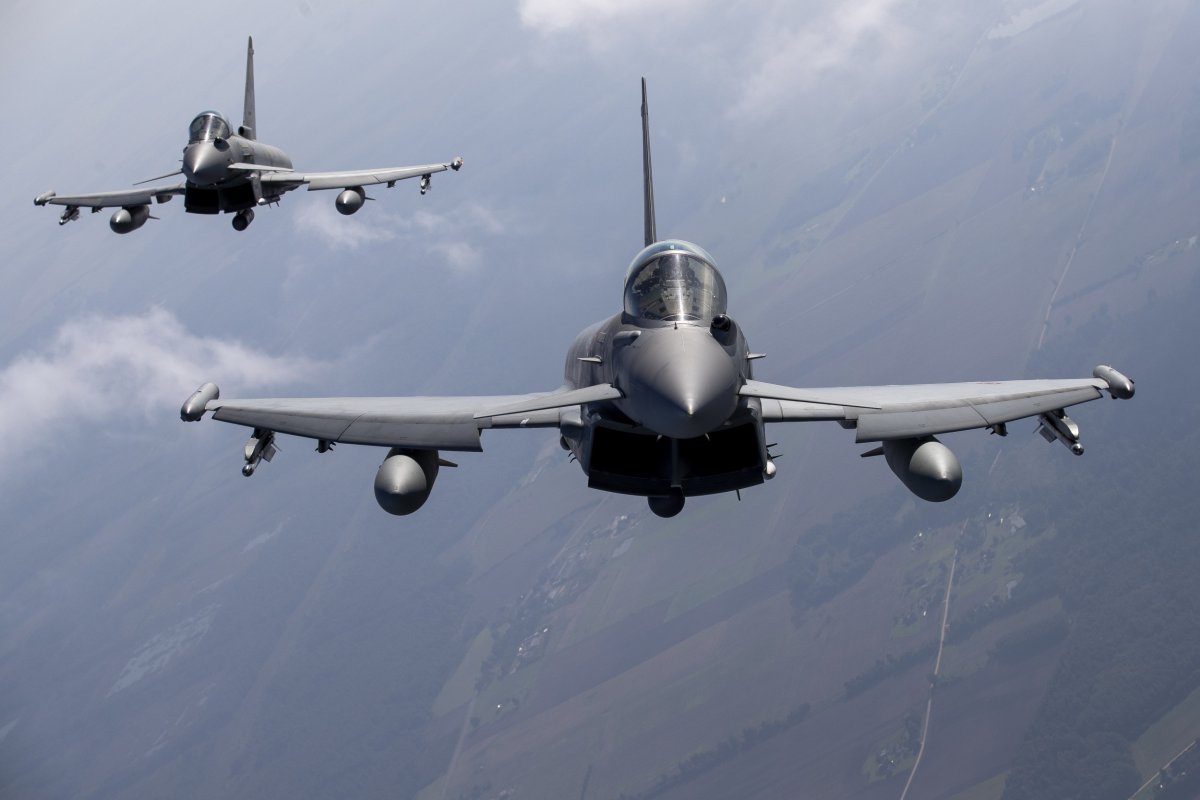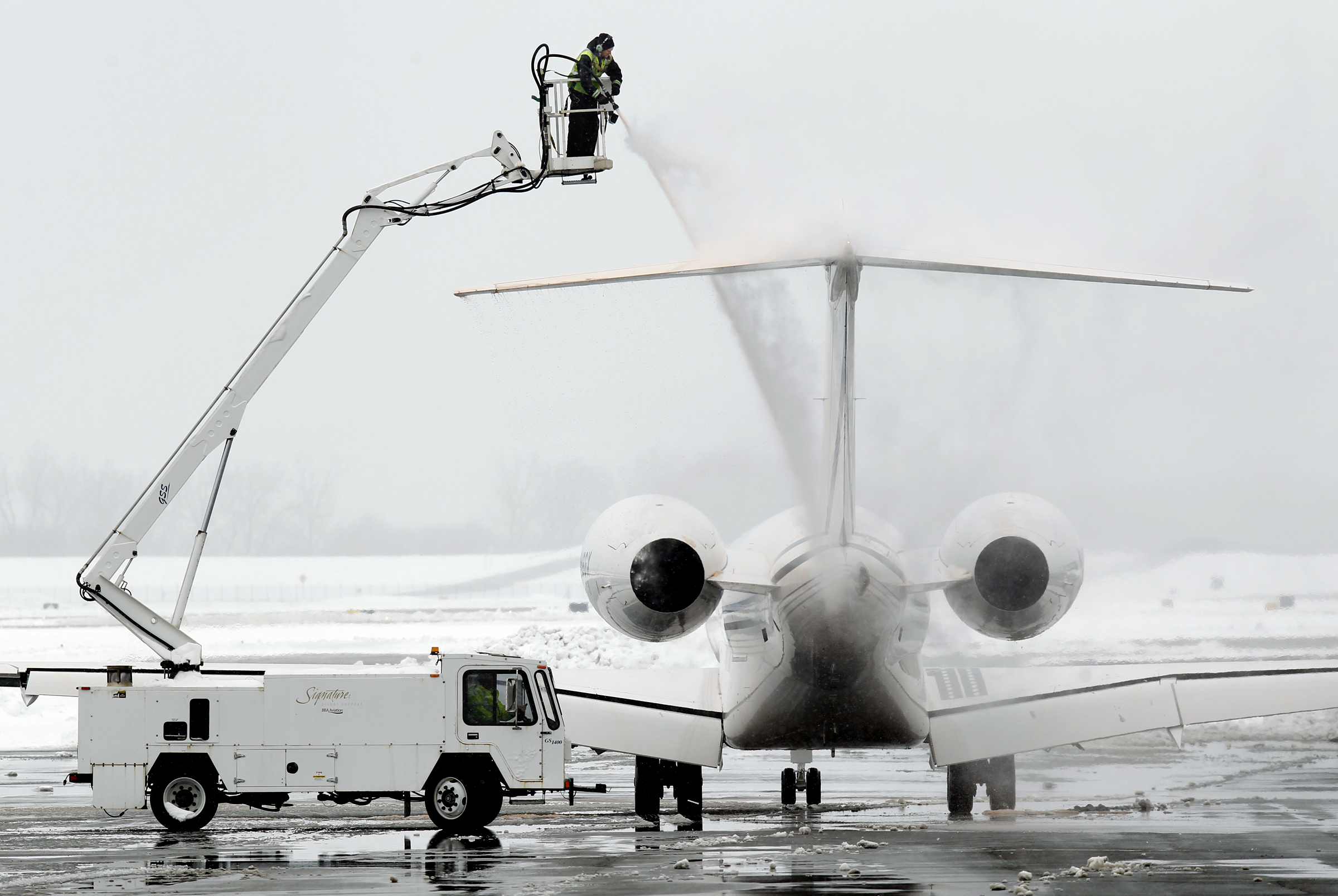NATO fighter jets conducting air patrol missions in the Baltic states had to scramble twice in late December to intercept and escort Russian aircraft, according to the Ukrainian news site European Pravda. From December 23 to 29, NATO fighter jets conducted defensive attacks to intercept Russian Il-20 and An-26 aircraft that were reportedly violating flight rules.
Newsweek reached out to the Ministry of Defense of the Russian Federation for comment via email and NATO for comment via a form on its website.

Why It Matters
NATO reportedly scrambling fighter jets in late December to intercept Russian aircraft is significant because the instances of Russia violating international airspace rules are seemingly more frequent, and it may be signaling a shift in Moscow's war tactics. Moreover, NATO scrambling jets to monitor Russian aircraft activity internationally highlights the alliance's continued support for Ukraine as the country's fight against Russian invasion wages on.
What To Know
The Russian aircraft spotted on December 23 was flying in international airspace from Moscow's mainland to Kaliningrad Oblast without a flight plan, according to the Ukrainian newspaper. The aircraft had its radar transponder switched on and was in contact with the regional area control center, the newspaper said.
NATO fighter jets intercepted the An-26 aircraft on December 25 and also identified one IL-76 aircraft, European Pravda reported.
NATO jets have been scrambling often recently to intercept Russian aircraft violating flight rules, as tensions between Moscow and Kyiv escalated in the last few months of 2024. Poland scrambled fighter jets early on Christmas morning in response to Russian missile attacks on Ukraine, mirroring Warsaw's actions earlier in December when it responded to Russia's missile launch into Ukraine.
Similarly, Russia violated international airspace rules seven times in one week last month per European defense officials and NATO fighter jets scrambled to monitor their activity. These incidents have become increasingly frequent in the last few months, with Sweden, Finland, the U.K., and other countries reporting sightings of Russian aircraft in international airspace.
What People Are Saying
In a post on X, formerly known as Twitter, Anton Gerashchenko, former Deputy Minister of Internal Affairs of Ukraine, wrote previously about Ukraine's strategies to protect their airspace citing The Economist: "Ukrainian experts are implementing the latest technologies to protect their airspace from Russian attacks. New developments significantly increase the country's defense capabilities. After Russia's full-scale invasion began on February 24, 2022, Ukraine's radar systems were severely damaged, making it difficult to detect low-flying drones and cruise missiles. However, four days after the invasion began, a group of ambitious Ukrainian technicians formed a unit called Technari to develop an alternative system to detect and track Russian air attacks."
"Hennadii Suldin, a co-founder, describes the technology as 'human radar.' It consists of a smartphone app and an artificial intelligence model that allows verified Ukrainian citizens to report flying objects they see or hear with the push of a button. Ukrainian engineers have also developed acoustic detection technologies that have proven to be extremely effective. This system uses sound waves to detect aircraft, which allows for the detection of threats that were previously that were not noticed by traditional radars. Ukraine's experience has changed matters, reckons James Hecker, who commands America's air forces in Europe from Ramstein air base in Germany. He describes Ukrainian innovation in acoustic sensing as "extraordinary".
What Happens Next
It remains to be seen whether Russia will continue to violate international airspace rules and how NATO members respond, either scrambling jets or enacting other policy changes that deter Moscow from conducting such missions.



















:quality(85):upscale()/2024/04/24/878/n/3019466/36c5693c662965c5d1ce91.72473705_.jpg)
 English (US) ·
English (US) ·